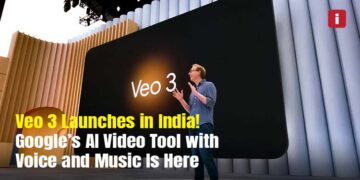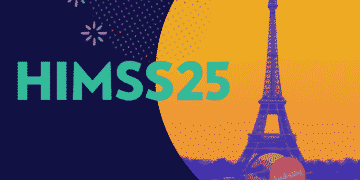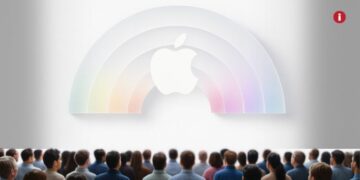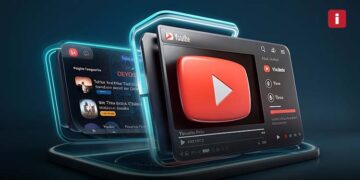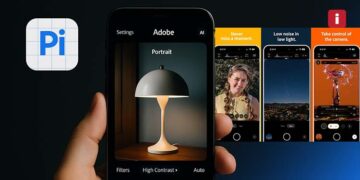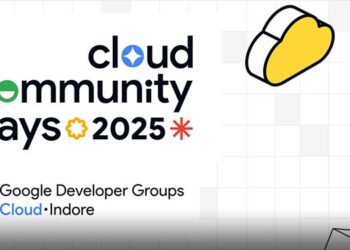Apple’s Worldwide Developers Conference (WWDC) 2025, which began on June 9, 2025, marks a significant leap forward in Apple’s software vision. The keynote unveiled a sweeping lineup of updates, redefining the user experience across iPhone, iPad, Mac, Apple Watch, and Vision Pro. From intelligent AI systems to a unified new interface language and enhanced productivity tools, this year’s WWDC is being hailed as Apple’s most transformative yet.
This article presents a detailed roadmap of what was announced at WWDC 2025 and what it means for the future of the Apple ecosystem.
WWDC 2025 | Date, Time, and Access
The WWDC keynote took place on June 9 at 10:00 AM Pacific Time (10:30 PM IST), and was streamed globally across Apple’s website, YouTube channel, Apple Developer App, and Apple TV app. The developer-focused conference will continue through June 13, offering technical sessions and hands-on labs for professionals across industries.
A New Naming Convention | Say Hello to iOS 26
In a move to simplify product understanding and unify naming across the ecosystem, Apple has transitioned to a year-based naming scheme. This means that rather than iOS 19 or macOS 15, users will now see:
- iOS 26
- macOS 26
- iPadOS 26
- watchOS 26
- visionOS 26
This approach aligns operating systems with the calendar year and reflects Apple’s commitment to consistent, annual evolution across its platforms.
Apple Intelligence | Practical AI, Not Just Buzzwords
Apple introduced its long-awaited AI suite under the brand name “Apple Intelligence.” Unlike competitors focused on flashy chatbots, Apple’s implementation centers on productivity, privacy, and seamless device integration.
Key features include a completely revamped Siri that is more context-aware, capable of multitasking, and integrates deeply with core apps. Users can expect real-time call transcription and translation, smart reply suggestions in Messages, and AI-enhanced features in apps like Safari and Camera. Apple Intelligence will also optimize device performance and battery life using on-device learning, ensuring data privacy without compromising efficiency.
For developers, Apple is opening up access to its internal AI foundation models (AFMs), paving the way for third-party apps to benefit from Apple’s neural engines.
A Unified Design | The “Liquid Glass” Interface
One of the most visually striking updates is the introduction of a new design language, codenamed “Liquid Glass.” Inspired by visionOS, this UI overhaul emphasizes clarity, depth, and motion. Transparent layers, smooth animations, and rounded edges create a more immersive and intuitive user experience.
This cohesive aesthetic will be applied across iOS, iPadOS, macOS, watchOS, and visionOS, signaling Apple’s intent to create a unified visual identity that supports both traditional and spatial computing environments.
Core App Revamps Across the Board
Apple has also taken a deep dive into redesigning several of its core applications. The Camera app now includes AI-powered filters and object recognition. Safari will offer AI-based reading modes and inline translation tools. The Phone app introduces real-time voice translation, call transcription, and improved audio quality. Messages now leverages generative AI for more natural replies, voice cloning, and even tone-aware suggestions.
On iPadOS, reports suggest a potential Mac-like menu bar and the introduction of resizable app windows. These changes are designed to further bridge the gap between iPads and laptops, especially for professional users.
Apple’s New Gaming Experience
Apple announced plans to replace the outdated Game Center with a powerful new native Gaming App. This cross-platform solution will support iPhone, iPad, Mac, and Apple TV, allowing for seamless cloud syncing, multiplayer gaming coordination, and native recording tools.
This initiative aims to reintroduce Apple as a serious player in the gaming space, especially as it seeks to boost subscriptions to Apple Arcade and expand into immersive gaming via Vision Pro.
Updates to watchOS and visionOS
watchOS 26 receives a notable interface refresh, offering gesture-based navigation, smart widgets, and context-aware notifications that adapt to user behavior. Third-party widgets will also be allowed in the Control Centre, giving users more customization power.
Meanwhile, visionOS 26 brings eye-scrolling, spatial content interaction, and improved controller support, including compatibility with PSVR2. With integrated AI, Vision Pro will offer live captioning, object detection, and better accessibility features — marking a major push towards inclusive, spatial computing.
Hardware Teasers | iPhone 17 Air and AirPods
Although WWDC primarily focuses on software, Apple used the stage to hint at upcoming hardware innovations. Most notably, the ultra-light iPhone 17 Air made a brief appearance. The device is rumored to feature a titanium body, edge-to-edge display, and enhanced camera features optimized for iOS 26.
Additionally, new AirPods models were teased, likely featuring gesture-based controls, studio-quality microphones, and live audio translation — all enabled through Apple Intelligence.
Conclusion | A New Chapter in Apple’s Ecosystem
WWDC 2025 makes it clear that Apple is not simply responding to market trends but redefining the way users interact with technology. With its integration of practical AI, visually stunning design, enhanced app experiences, and a strong developer focus, Apple is paving the way for a smarter, more cohesive digital future.
As we look ahead to the public rollout of iOS 26 and related software later this year, users and developers alike can expect a more intelligent, immersive, and seamless Apple experience.
For continued coverage of WWDC 2025 and in-depth analysis of all Apple announcements, stay tuned to Insight Tech Talk.












